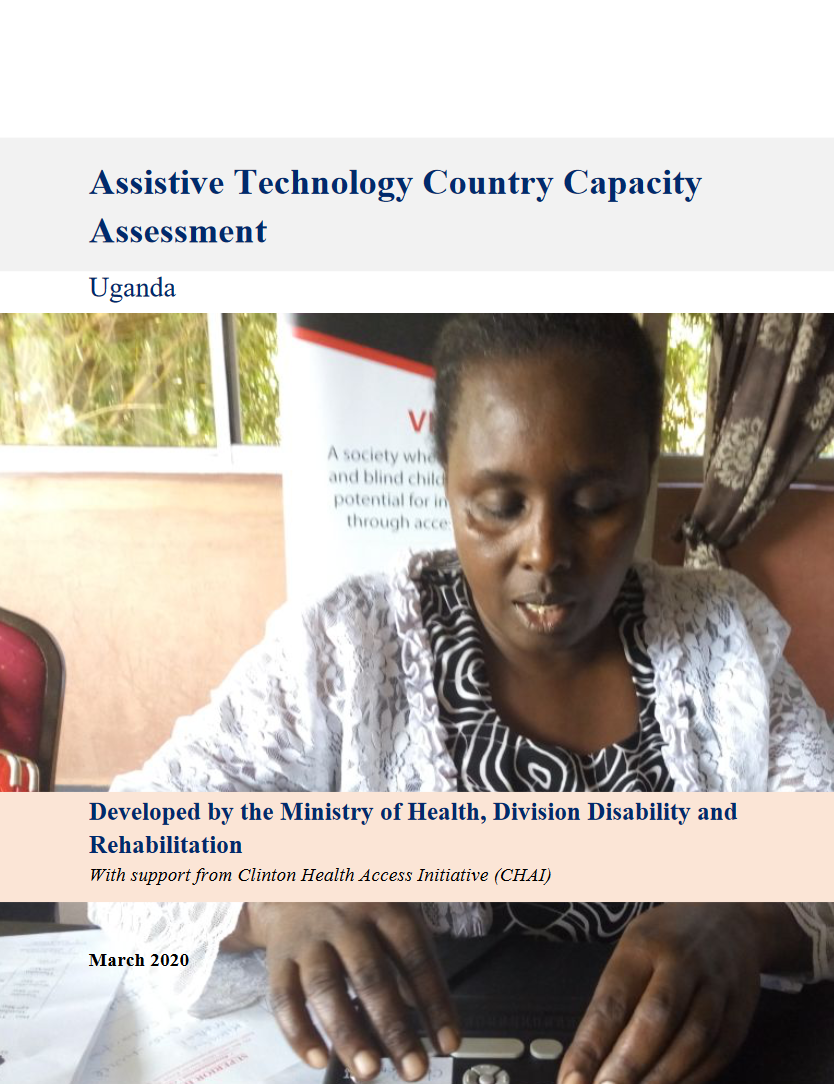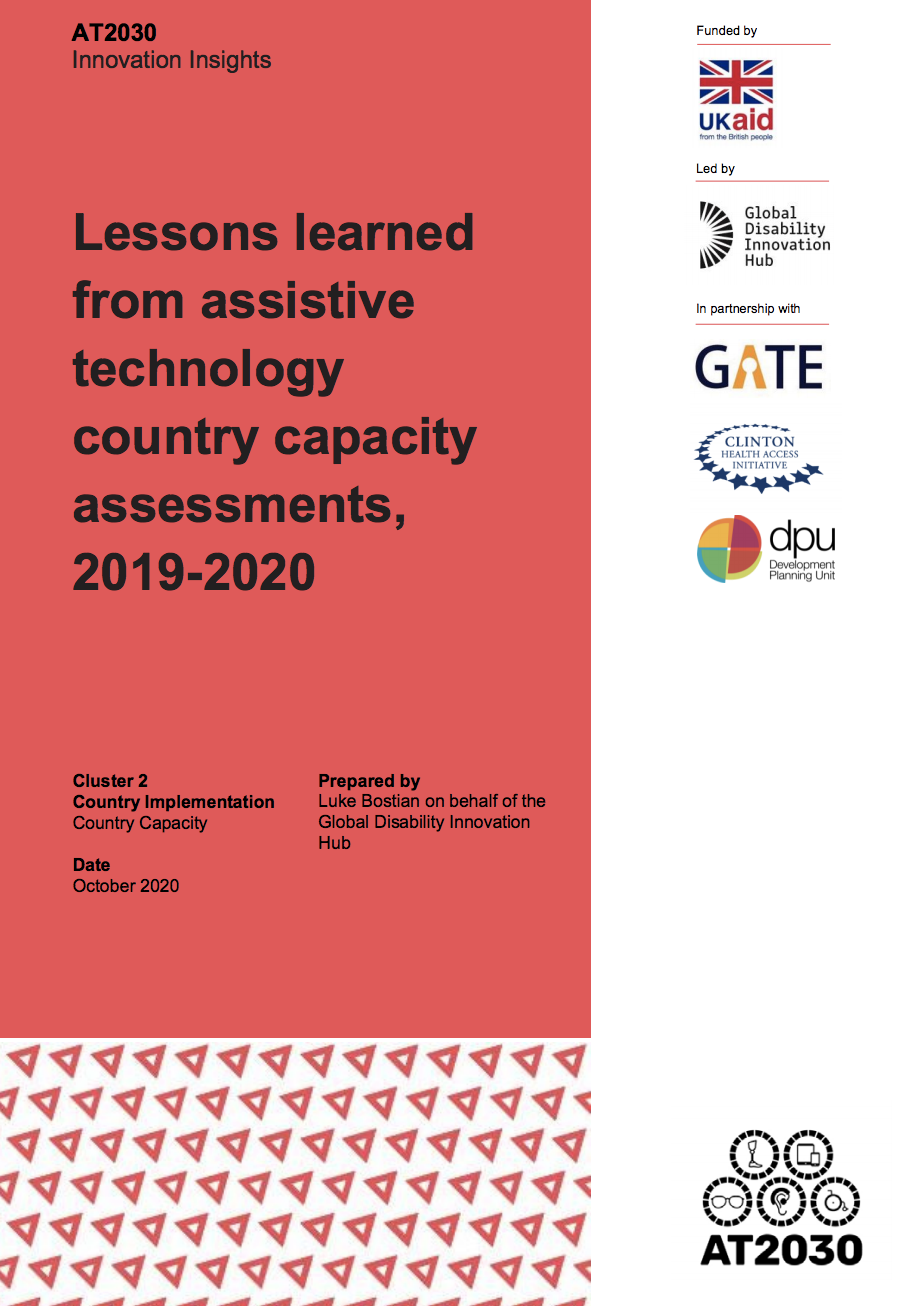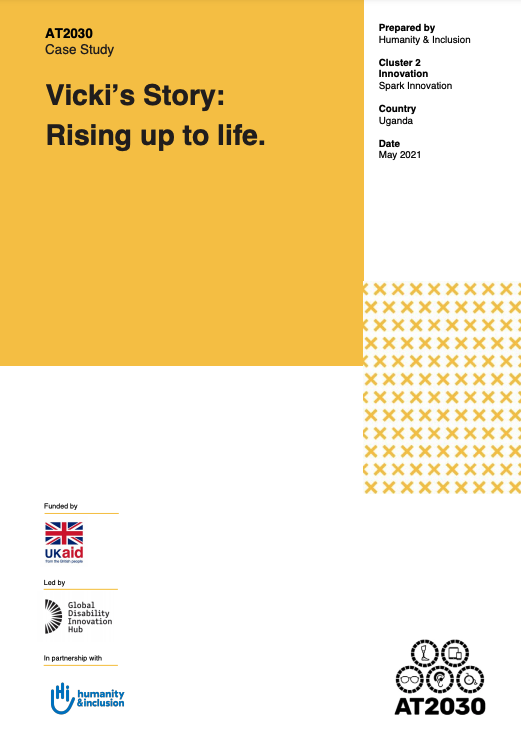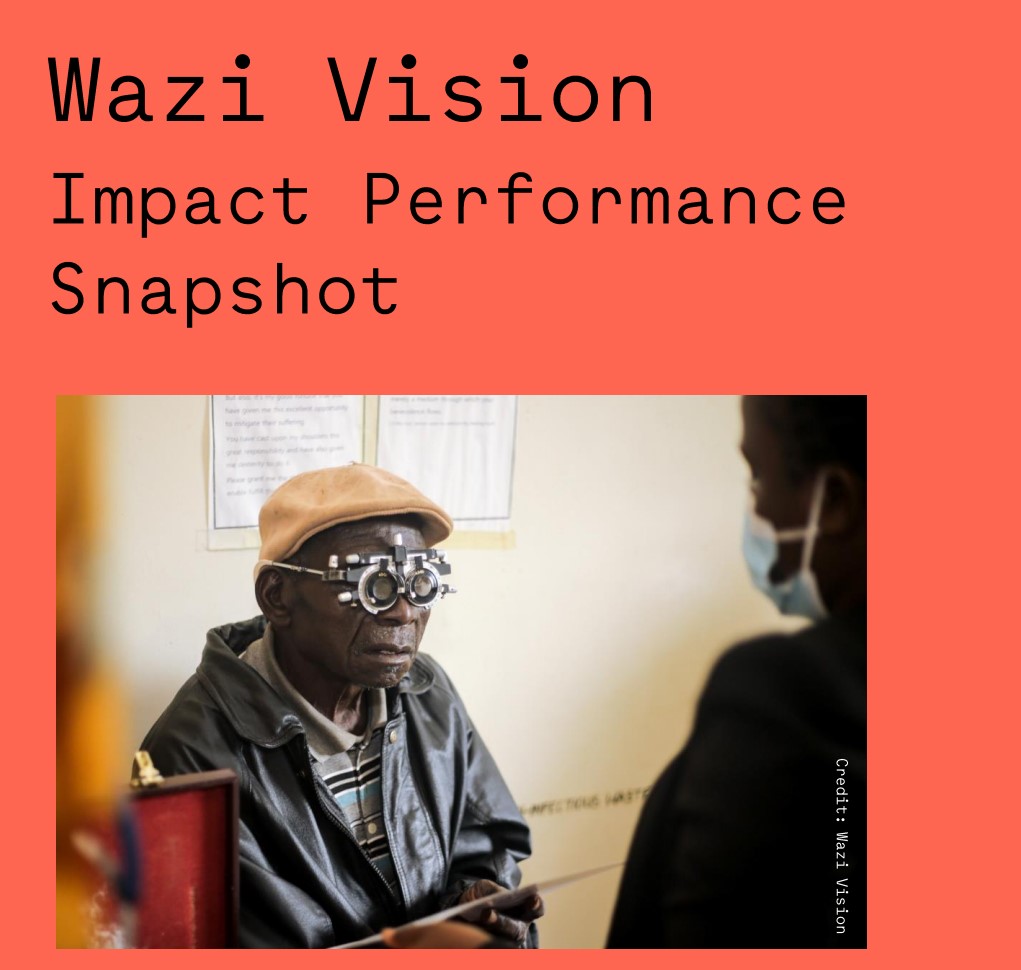Search Our Whole site:
Just Search: Uganda

Uganda Capacity Assessment Report
The Uganda Functional Difficulties Survey indicated that over 62% of persons with disabilities who needed AT did not have such devices. Similarly, according to a recent survey carried out by the Department of Health in Gulu, 83 percent of people who needed assistive devices do not have access to them, and the quality of the devices that exist is often poor. The purpose of Assistive Technology Scoping Assessment in Uganda was to evaluate and monitor country’s capacity to procure and provide Assistive Technology that appropriately meet the population’s needs.

Humanity and Inclusion 3D prints face shields for COVID 19 first responders in Uganda
In Uganda, HI has adapted 3D printing technology used for physical rehabilitation to produce protective face visors for health professionals on the front line

Brenda's Story
10-year-old Brenda who lives with her mother in Ofua, Rhino Camp, Arua district in Uganda was born with hydrocephalus, a condition in which build-up fluid is stored in the cavities deep within Brenda’s brain. The extra fluid has put pressure on Brenda’s brain which the mother felt would cause damage to her daughter’s brain, as she narrates,” My daughter’s head has enlarged since she was born, she experiences headache, has cognitive difficulties, impaired vision and she has loss coordination and incontinence”.

AT2030 – Final Report 3D PETRA Project
The 3D Petra project sought to develop effective solutions combining tele- rehabilitation, Computer Aided Design (CAD) Computer Aided Manufacturing (CAM), and 3D printing to increase access to orthotic devices (a sub-set of AT) for use in emergencies and remote settings. Regarding the technology in use, only the shells of the orthoses were printed. The rest of the devices were assembled using conventional materials and components. Fitting also followed a conventional process. The project was implemented in the West Nile part of Uganda, specifically Arua District, within the refugee settlements of Omugo and Imvepi, including the catchment of host communities.

Final Report: Assistive Technology Country Capacity Assessment in seven African Countries using WHO Assistive Technology Assessment-Capacity Tool
Draft prepared by Clinton Health Access Initiative (CHAI)

Learnings from the Implementation: Assistive Technology Country Capacity Assessment using WHO Assistive Technology Assessment-Capacity Tool
This draft was prepared by the Clinton Health Access Initiative (CHAI)

Lessons learned from assistive technology country capacity assessments 2019/2020
The purpose of the CCAs is to “capture a high-level understanding of the often-fragmented AT sector in a country or region,” helping raise awareness about AT gaps and opportunities and contributing to advocacy and policy and program development. One year after the first CCAs began, GDI Hub commissioned research into lessons learned so far and recommendations for how the tool and process might be improved in the future.

Hakim's Story
Hakim is a 30-year-old male refugee from South Sudan staying in one of the 6 villages that make up Omugo Refugee settlement, the 7th zone in Rhino Camp. AT2030 partner Humanity & Inclusion (HI) has been working with persons with disabilities (PwD) like Hakim since 2018.

Vicky's Story
Life in a refugee settlement can be so difficult and challenging. You can imagine how it is like to trek so many kilometres fleeing a conflict from your home country. You can also now imagine the challenges Persons with Disabilities go through 365 days a year. This is twice the suffering experienced by other people, in terms of accessing services, information, the discrimination that comes from being different. 6-year-old Vicky, a resident of Rhino-camp refugee settlement is the second-born in an extended family of eleven. Together with her family members, she fled South Sudan in 2016, when she was only 2 years due to the war.

Wazi Impact Performance Snapshot
Wazi were part of AT2030's Assistive Tech Impact Fund, using catalytic capital with expert-led venture-building, to unlock new solutions for scale, building AT ecosystems and driving change. This report, developed by 60Decibels, explores more about Wazi customers, their profiles, outcomes and experiences - looking at key performance and impact metrics to discover customer loyalty, feedback and overall impact to lives.